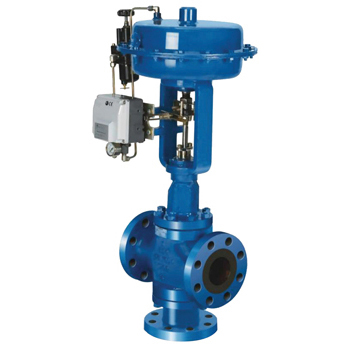 |
Three-way control valve
These valves are terminal actuators of automatic control systems and remote control systems, which are used to control the flow of liquids and gases. Regulating valves specially used for three-way control occasions;
The three-way valve can discharge (divert) the fluid in two outlets or collect the fluid out of one outlet (confluence).
Three-way valves are generally used in heating systems, ventilation systems, air conditioning and other industrial branches.
It is widely used in petroleum, chemical industry, electric power, metallurgy, biopharmaceutical and other working conditions.
Characteristic
· The flow characteristics are isolinear.
· Valve body materials are cast iron, ductile iron, carbon steel and stainless steel, alloy materials, etc.
· Valve internals are made of stainless steel, alloy steel, etc.
· The inner parts of the valve can be hardened by heat treatment and hardened by surfacing Ti-Lai alloy to increase hardness and corrosion resistance.
· Extended valve cover and graphite packing can be used in high temperature medium.
· Seat seal is metal seal or soft seal, leak grade up to IV and VI;
· It has the structure of diversion and confluence.
· The multi-spring film actuator can hold up to 24 springs and the maximum spring pressure is 1.8-3.8 bar.
· The spring pressure range can be adjusted without changing the spring or adding other parts.
· Exchange of positive and negative actuators can be realized without replacing or adding other parts.
· Besides pneumatic actuator, electric actuator and handwheel can also be installed.
· Valve positioner, filter pressure reducing valve, solenoid valve, limit switch, air lock valve and other accessories can be configured.
· It can be equipped with film type, cylinder type and electric actuator.
technical specifications
· The nominal diameter is DN15-250 (1/2"-10").
· The pressure level is PN10-PN40 (CL150-CL300).
· The flow coefficient is Kv 0.63-630.
The last one:Eccentric rotary control valve
Next item:Sleeve control valve